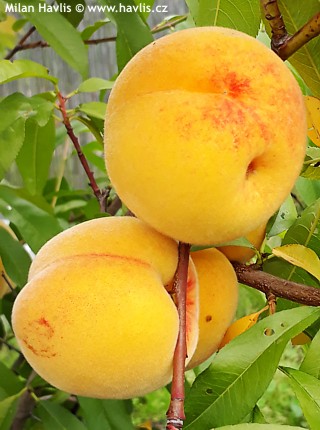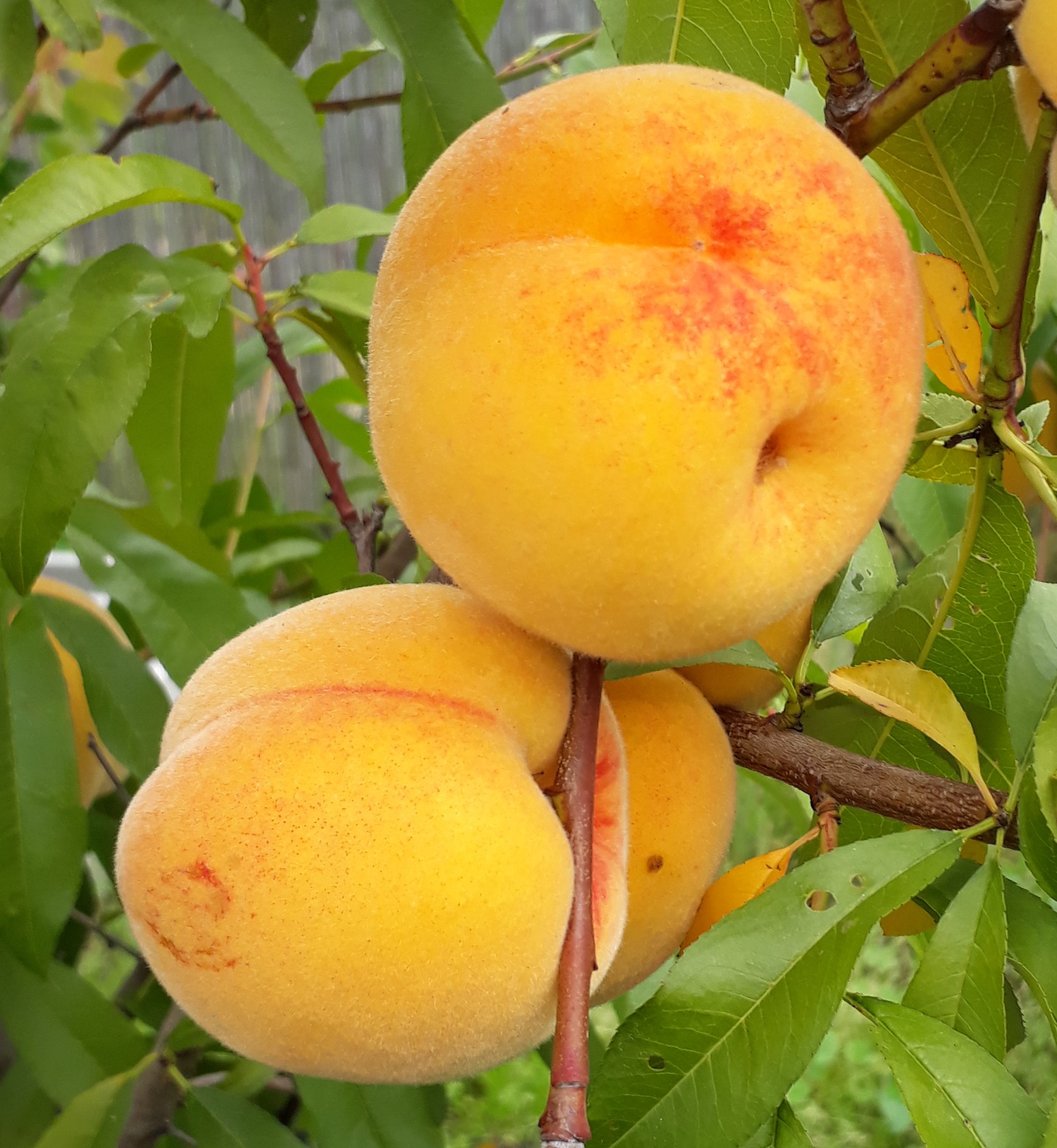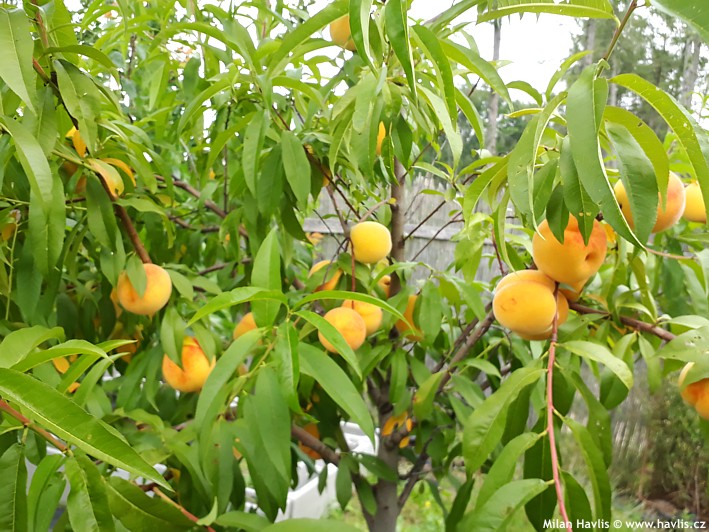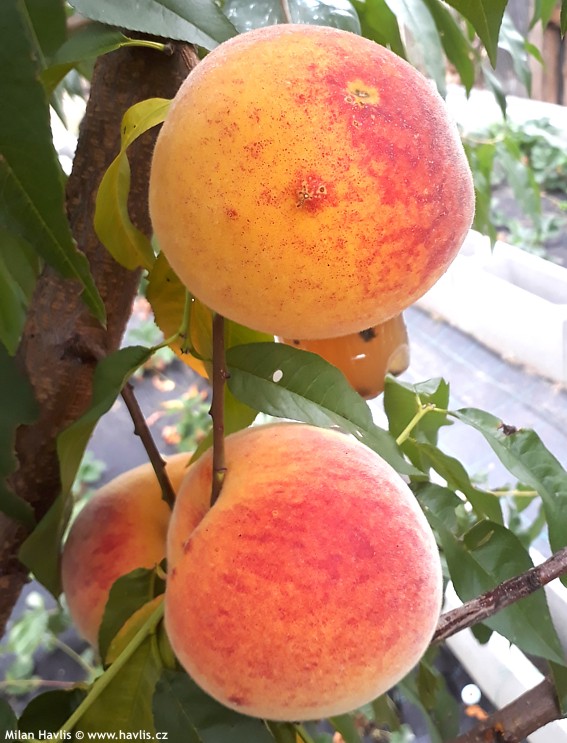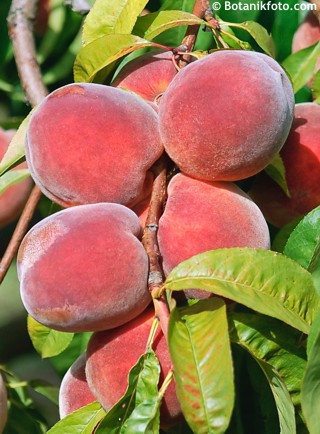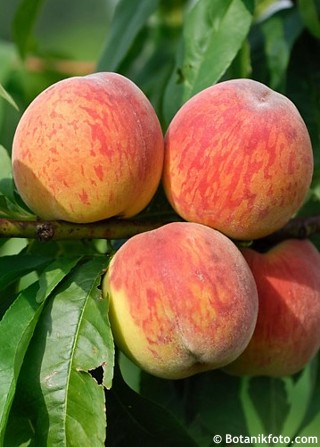Prunus persica 'ROMEA' peach tree - late cling
Prunus
Cling peaches are a phenomenon among peach varieties that offer firm flesh ideal for further processing - canning, juicing, or making preserves. They are commonly clingstone which is why some other clingstone varieties are also mistaken to be cling, however, unless their flesh is firm they should not be considered cling.
Romea is an Italian cling peach variety, possibly the earliest among late - already in mid August it can offer immensely beautiful fruit of delicious flavour in Central European climate. The skin is rich golden yellow with red stripes first that develop into a red flush taking up almost 40% when mature. The taste is extremely sweet, the flesh is firm yet very juicy, and very fragrant. The fruit is large and young trees cannot cope with high yield so thinning is crucial for young trees as a prevention from partly mature fruit falling down, and recommended for commercial cultivation in order to keep the fruit size because the trees crop heavily. Romea thrives in areas with long and warm summers. It is obviously a superb variety for eating fresh, not only for processing.
Trees are semi-vigorous, densely branched, moderately prone to leaf curl. Self-fertile. We suggest planting peach trees in open space so they can feel cold, spring breeze which will delay flowering and thus prevent the flowers from frost damage. It likes slightly alkaline soil, moist but well drained. Do not transplant bare-root trees in autumn, only in spring. Pruning is possible in early spring after flowering or in mid-late August after harvesting the fruit – reduce long branches to 30-50% of their size and remove weak ones. The best yield however is from an unpruned tree which grows naturally. We have trialled Romea down to -24°C so far and it showed no problem. Its expected hardiness is around -27°C (USDA zone 5b). It flowers 4-7 days later than Redhaven which helps it escape late spring frosts.
Last update 15-02-2019

































